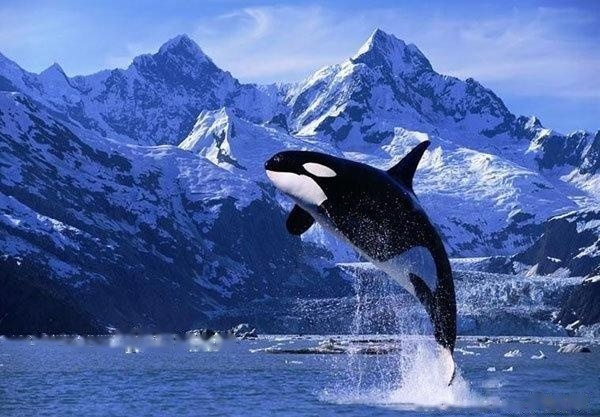killer whales can mate all year round. Females give birth every 3 to 5 years. The gestation period is 1 year. For the next 1 to 2 years, the cubs can only make rough sounds when they are hungry or calling for females. In the future, with the growth of age, gradually imitate the adult's voice, improve and enrich their own calls, but because the language of killer whales is complex and changeable, it will take at least 5 years for the cubs to fully master the adult language. time.

Killer whales are polygamous. In the Pacific Northwest, most mating occurs between May and July. In the Northeast Pacific, they give birth mostly between October and March. The male sexually mature body length is 5.2 to 6.2 meters, and the female sexually mature body length is 4.6 to 5.4 meters. Females give birth to their first viable calf between 11 and 16 years, and the smallest newborn calf recorded in the North Pacific is 2.28 meters long. The farrowing interval is about 5 years. Females stop giving birth at about 40 years of age, after which the reproductive period averages about 10 years, which can be extended to more than 30 years. The average life expectancy is estimated to be 80 to 90 years. Males reach sexual maturity at about 15 years of age, with an average life span of about 29 years and a maximum life span of about 50 to 60 years.
【Subspecies differentiation】
U.S. researchers report in the journal Genome Research recently that they sequenced the DNA of killer whale mitochondria At least 3 new killer whale species have been discovered, suggesting that there is more than one species of killer whale in the global ocean.
In the new study, the researchers sequenced the mitochondrial DNA of 139 killer whales using highly parallel sequencing technology. The killer whales came from the North Atlantic, North Pacific and waters near the Antarctic continent. The researchers finally found that the two species of killer whales living in Antarctic waters, which mainly feed on fish and seals, may belong to a new species, and there are also new populations of killer whales in the North Pacific.
The mitochondria in killer whales, like other cetaceans, rarely change over time, said Philip Morin, a NOAA geneticist who led the study. It is therefore difficult to spot newly evolved killer whale species without looking at the entire genome. But using highly parallel sequencing technology, the genome of killer whale mitochondria can be sequenced by measuring killer whale tissue samples from around the world, thereby distinguishing new species.
【Population Status】
Historically, killer whales have been directly hunted in Japan, Norway, and the former Soviet Union. There is no fishery that directly hunts killer whales. The rise of killer whale shows in aquariums in the 1960s spurred the rapid development of live orcas fisheries. Demand for live capture has declined with the development of breeding techniques for killer whales. Oil spills at sea and contamination by other toxic substances pose some threats to the health of killer whales, and the disturbance of orca prey by sea traffic is a potential impact. There are an estimated 70,000 killer whales in the Antarctic, with only some sporadic population surveys of orcas in other waters. The IUCN Red List of Threatened Species ver 3.1 in 2000, and killer whales are listed as low risk (LR).
The killer whale is not threatened with extinction, but human hunting may have caused population declines in some areas. There are only a few hundred orcas left in Washington state and British Columbia, whether they are resident or transiting, and are threatened by pollution, heavy boat traffic, and reduced prey. Intensive whale watching may interfere with the life of killer whales, which are driving to protect salmon farms from pinnipeds and prey reductions. Intensive whale watching could potentially drive killer whales out of their preferred habitat. It is estimated that there are about 8,500 killer whales in the tropical waters of the eastern Pacific Ocean, at least 850 in Alaska waters, possibly more than 2,000 off the coast of Japan, and about 8,000 killer whales in Antarctic waters in summer. Other areas within the range may be in the hundreds to thousands. Whalers in Japan, Indonesia, Greenland, and the West Indies continue to hunt killer whales, although the kills are small, but the impact on local populations may be considerable.
【Protection level】
Included in the 2012 IUCN Red List of Threatened Species ver 3.1 - Data Deficient (DD ).
![[Dog Training 5] The training method of pet dog dining etiquette](/static/img/12192/12192_1.jpg)




